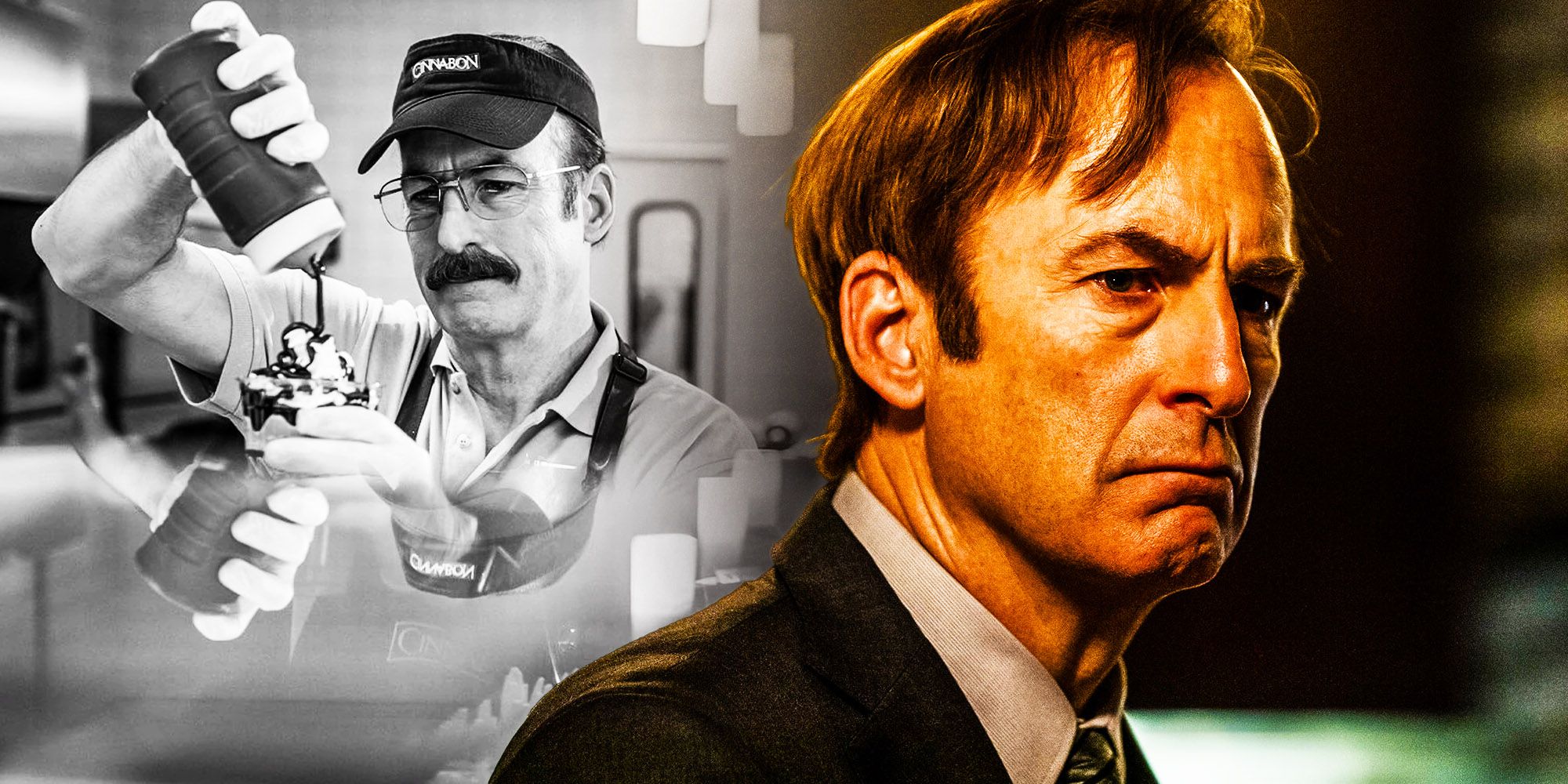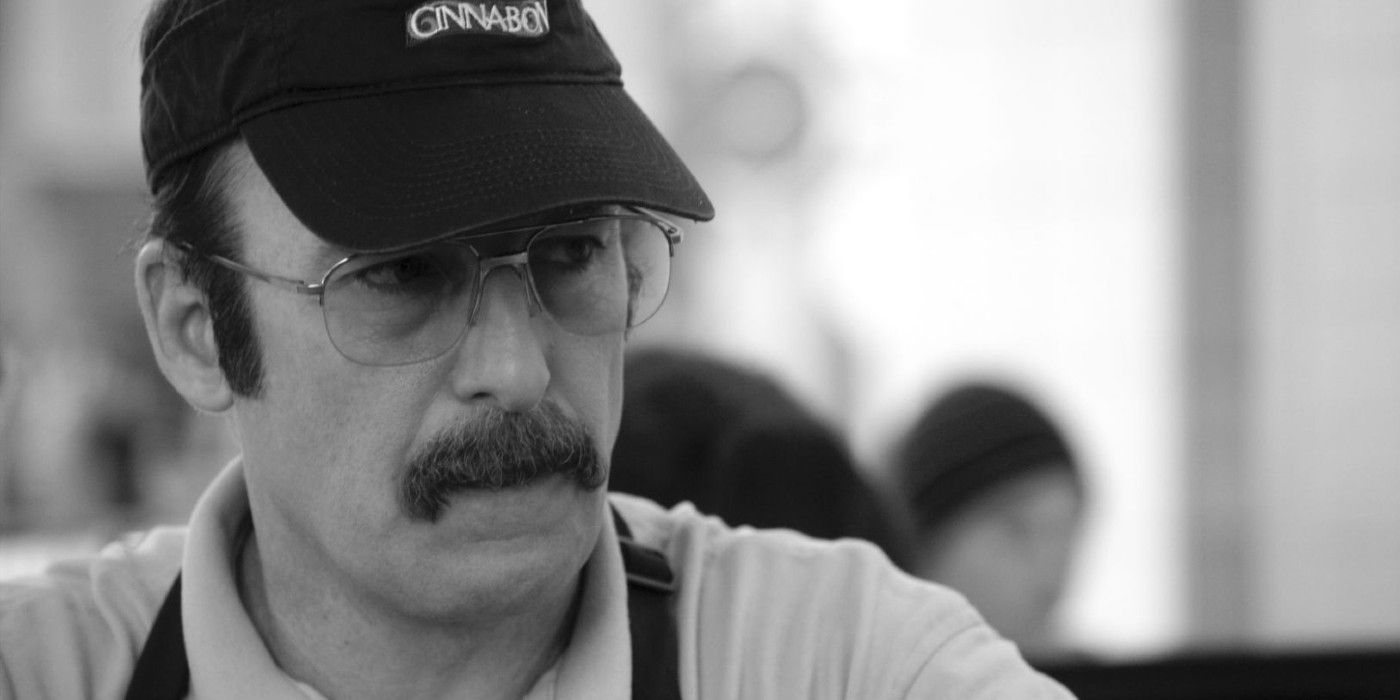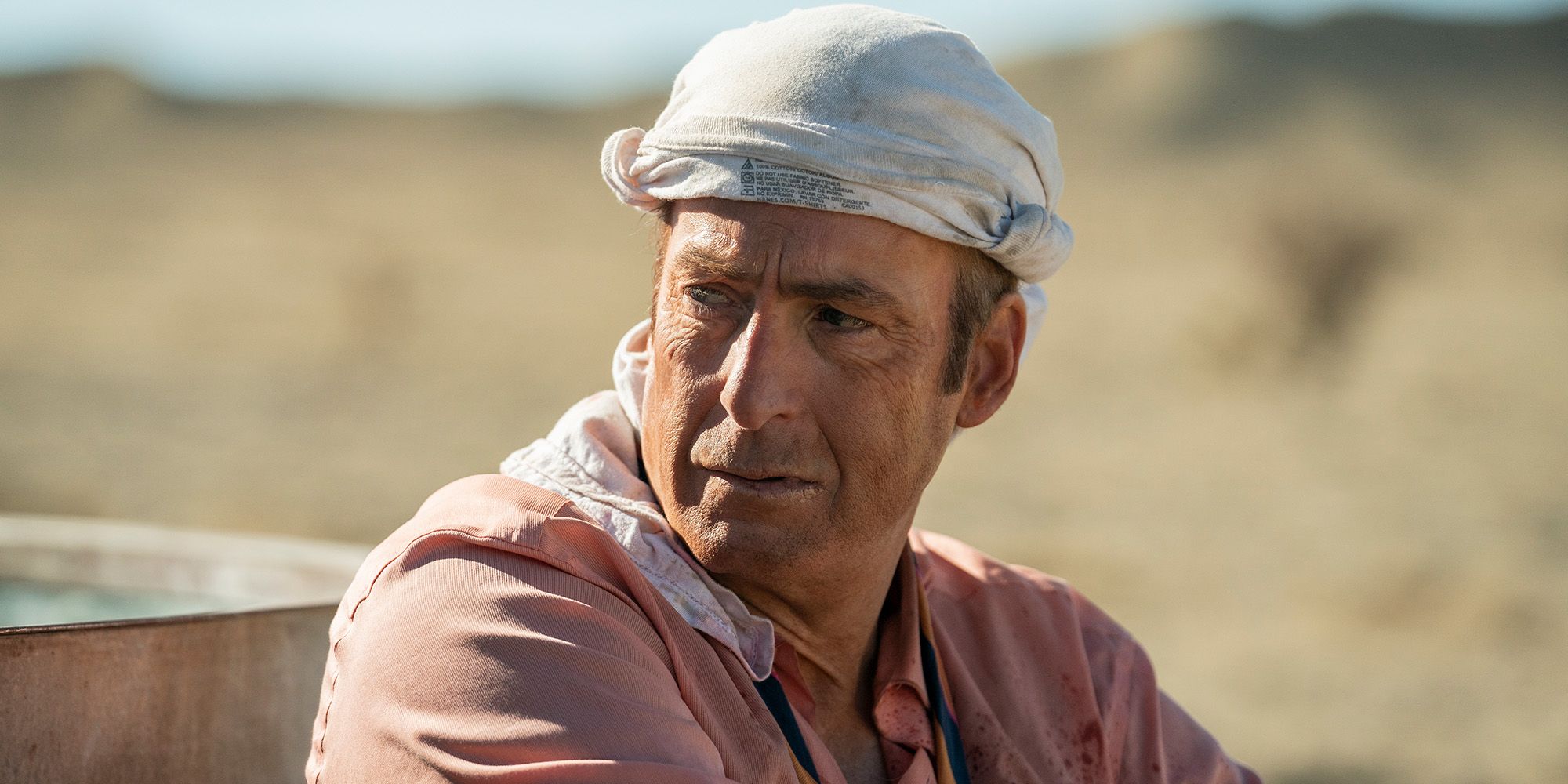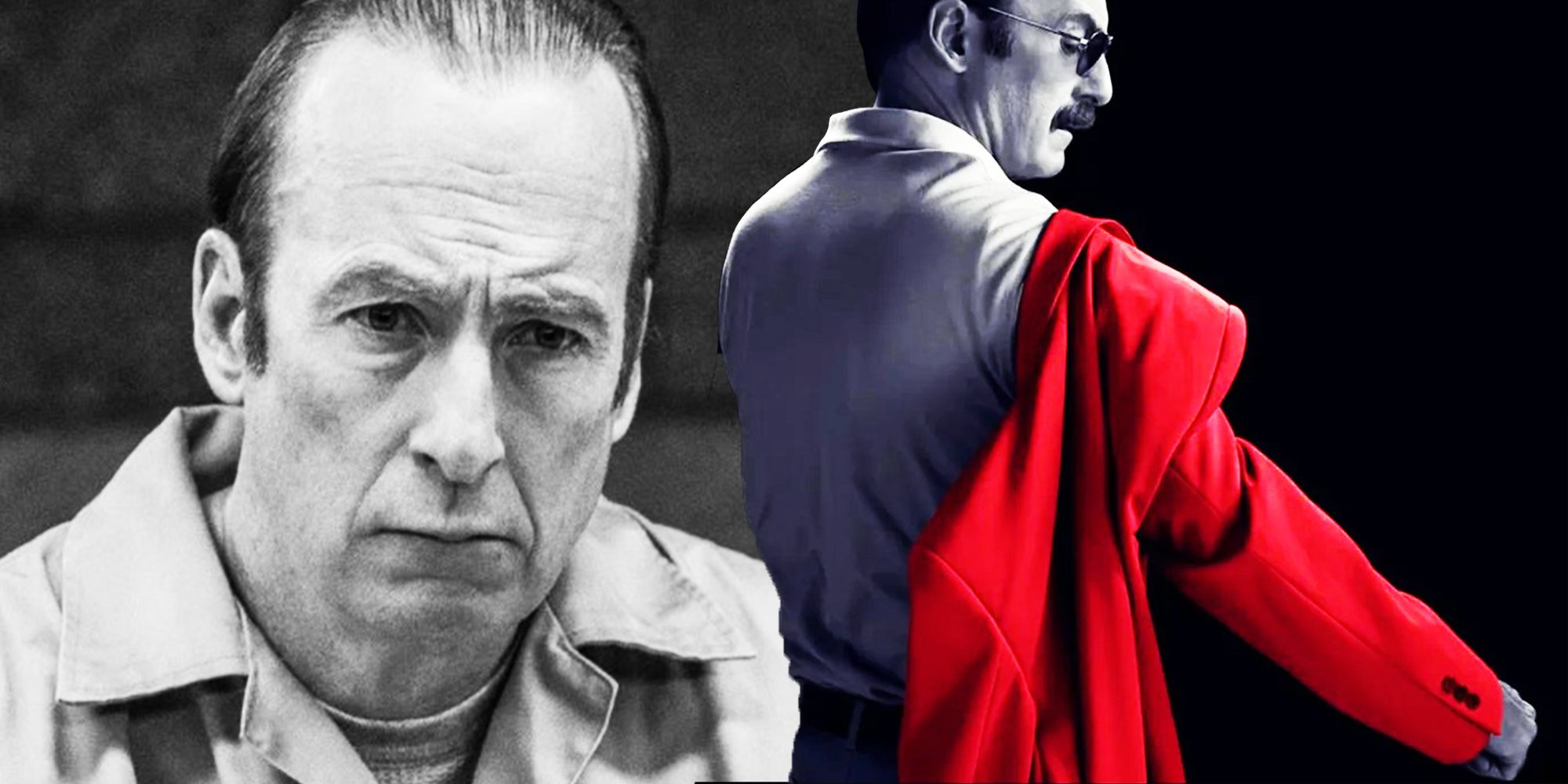Better Call Saul could not have taken a bigger risk with its debut episode, and boldly refused to justify that gamble until the very final season. Since Better Call Saul concluded in 2022, the Breaking Bad spinoff prequel has come to be broadly considered an unabashed triumph, equal to - maybe even superior to - its esteemed predecessor. That was not the case when Better Call Saul was announced in 2013. Given the almighty reputation of Breaking Bad and the long line of failed TV spinoffs in history's rearview, the prospect of a series focused entirely around Bob Odenkirk's Jimmy McGill seemed more likely to backfire than catch fire.
Making a first impression was, therefore, very important for Better Call Saul. With the skeptics already looking for cracks, Vince Gilligan and Peter Gould needed to get their opening move right. Better Call Saul season 1, episode 1, "Uno," opened with Jimmy McGill, now known as "Gene," making pastries at a shopping mall Cinnabon outlet. After a hard day making iced treats, Gene miserably headed home to wallow in the comfort of old VHS tapes containing glory years gone by. That Better Call Saul got away with this intro, which only truly makes sense after watching season 6, is astounding.
Better Call Saul's First Scene Was A Massive Risk
Better Call Saul's first scene took a number of massive risks that would typically have TV studio executives sweating into their suits. Opening in black and white was bold enough - draining the Breaking Bad world of its traditional color, and potentially turning casual viewers away by inviting the question, "is it all going to be like that?" Adding to the unconventional style of Better Call Saul's iced open, the minimal use of dialogue and scarcity of Breaking Bad connections meant Gene's debut scene hugely lacked context.
Given that the spinoff was billed as a prequel, it took a beat or three to acclimatize to Better Call Saul's opening, and to deduce that "Gene" is what became of Jimmy after Breaking Bad. Not only was the very first scene of Better Call Saul visually dour and near-silent, it was deliberately disorientating. Amplifying that confusion further, "Gene" would not appear again until Better Call Saul season 2. The introduction almost felt like a post-credits tease masquerading as a curtain-raiser.
Compare this to Breaking Bad's first scene, which immediately established Walter White's character, revealed he was in trouble with the law, and offered a high-octane, visually striking, kinetic style. Better Call Saul's first scene is almost the antithesis to how a TV show should traditionally begin. Only in Better Call Saul season 6 would the reason for that become clear.
Better Call Saul's Opening Didn't Pay Off Until Season 6
The Gene timeline remained a relative mystery throughout Better Call Saul season 1, but as the prequel continued, its concept gradually became clear. With season 2's premiere, Better Call Saul established that each run would begin with a brief and tragic peek into Jimmy McGill's mundane post-Breaking Bad life. Nevertheless, the overarching purpose of Gene's story in Better Call Saul remained frustratingly obscured. Exactly where the Gene timeline was going - and whether it had a point at all - only came into focus when Better Call Saul season 6 finally made a permanent switch to the black-and-white future and told the story of Jimmy McGill's eventual redemption.
This late-in-the-day resolution made Better Call Saul's decision to open on a black-and-white future timeline with zero explanation seem even more risky in hindsight. If the Breaking Bad spinoff series had told its future timeline story at a brisker pace, and also given an earlier hint of the endgame, episode 1's unconventional opening would have made sense much sooner. Instead, Better Call Saul only truly began exploring what the Gene timeline was about in its dying episodes, waiting almost the entire length of the show to deliver on its first scene.
Why Better Call Saul's Intro Risk Worked So Well
Even if Better Call Saul beginning with a black-and-white sequence that took place at an unknown point in the Breaking Bad timeline and had no obvious connection to either show's main plot was a massive risk, the gamble ultimately paid off. Disorientating though it may be as a jumping-off point, the jarring nature of Better Call Saul's opening perfectly conveyed the difference between Saul Goodman and Gene Takavic - the former is bold, brash, and breaking laws; the latter is balding, banal, and baking buns. Just like Saul is a fish out of water, Better Call Saul's earliest frames were designed to reflect that sensation.
Looking more broadly at the overall Better Call Saul tapestry, opening on Gene in episode 1 was the best option from a thematic standpoint also. Even though Better Call Saul is fundamentally a prequel, the past storyline is actually a long account of how Jimmy McGill became the "Saul Goodman" seen in Breaking Bad, and why he makes the choice to come clean in Better Call Saul's series finale. Knowing how the story ends, kicking off proceedings with "Gene" languishing in Omaha was the perfect introduction - even if it seemed strange at the time.




